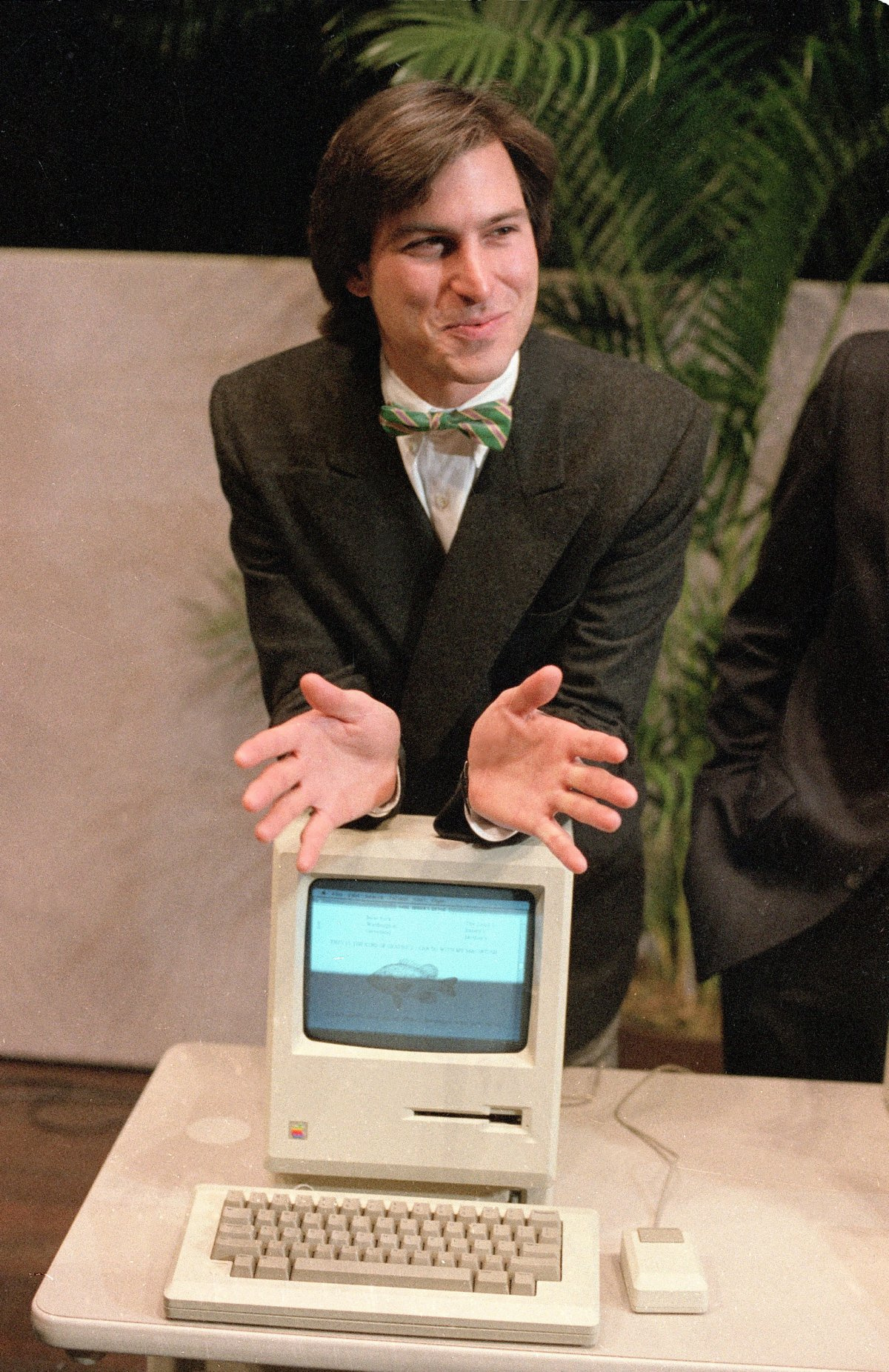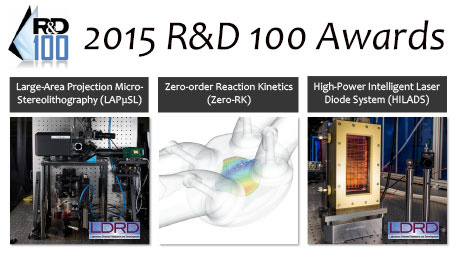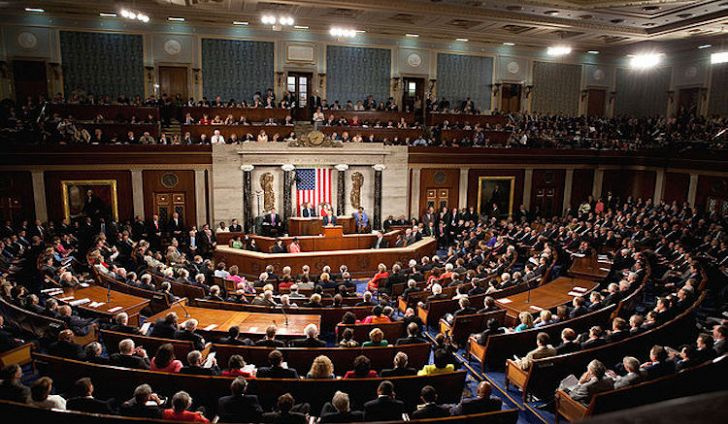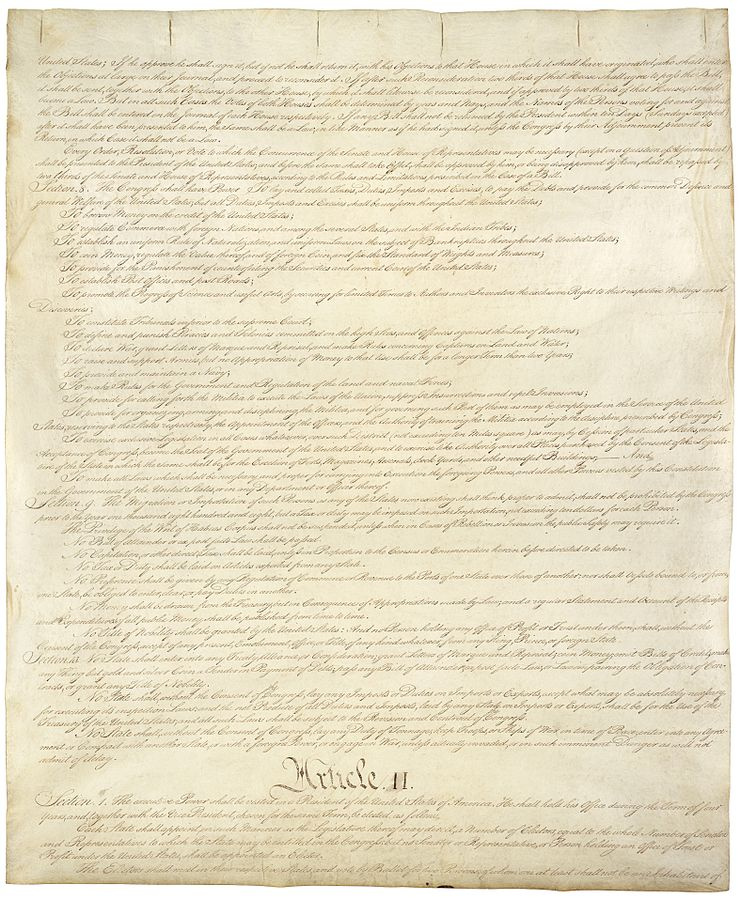Elements of the US National Innovation System, p. 1: business environment and tax, trade and economic policy
In the previous article, we looked at the evolution of the national innovation system of the United States, showing how the country has reached the present level of development of the system. For the effective development of the environment is important balanced work of the state in several directions. This time we will analyze the US innovation system into elements and see the approach to each of them by the federal and municipal authorities.
Last time, we introduced the concept of "The triangle of innovation success", which includes:
Today we will look at the first two factors, and for dessert, next time, we’ll leave the policy applied to the development of the system in the USA.

Massachusetts Institute of Technology
Market Structure and Company Behavior
The level of
US management skills can be called a leader in terms of management. It was here that the “management” discipline was born in the 1950s, and was taught in business schools of universities. This is partly due to the environment itself - high competition within the country.
Acceptance of ICT
American companies are leading in the adoption of information and communication technologies, both hardware and software. They are more than firms of any other country, investing in the purchase of equipment and software. For example, two times more than Korea. In this case, American companies from these investments and get more revenue. This is due, among other things, to the fact that US firms use ICT for fundamental restructuring of production processes.

Time horizon and risk preparedness
Despite the high quality of the work of managers in the United States, they become hostages of the company's strategy, focused on getting past results. This reduces their ability to invest their own efforts in long-term projects. In a 2004 survey in which more than 400 executives from US companies took part, more than 80% indicated a decrease in R & D, advertising, service, and hiring costs. More than 50% said they would postpone new projects, even if this would be associated with a decrease in the value of the company. Everything is done to achieve maximum results in the shortest possible time. These factors, according to experts, reduce the efficiency of the market and the profitability of investments.
Business financing system
Venture capital
In 1946, the United States was foundedAmerican Research and Development Corporation . The firm was created to encourage private sector investment in enterprises founded by World War II veterans. This investment firm attracted funds from individuals, not just rich families like the Rockefellers.
Following it, hundreds of private equity firms appeared. New industry players helped to not only invest, but also to perform key management functions, develop strategies. Today, in every US state, there are venture investment companies and business angels.
Individual state governments implement venture capital support programs for start-ups in the early stages. The community of business angels helps coordinate their efforts and look for startups to invest. The federal government is subsidizing young companies in some industries through the program " Investment of small business » (Small Business Investment Company): investment companies, subsidized by the Government, carry out long-term investments in small businesses. The “ Small Business Innovation Research Support Program ” provides small enterprises with financial support in the form of non-returnable grants on a competitive basis.

Company financing
In the US, companies can attract funds in a large number of ways from placing bonds and IPOs to raising government loans. For start-ups, absorption by larger companies has recently become commonplace. Among the most striking examples is the Facebook purchase of the WhatsApp messenger for 16 billion dollars .
Cultural factors The
nature of customer demand
The more customer choosy - the more effort the company has to spend to meet its demand. The more difficult it is to operate in the market, the more innovation is needed to successfully combat competitors. The huge market of spoiled consumers, who have access to an unlimited amount of information thanks to the Internet, makes American companies in constant tension in search of innovations. Another distinctive feature of the American consumer is its desire to become an early follower of new products and technologies.
Risk and entrepreneurship
For a long time, Americans were considered “Yankee inventors” (heroes of a folk tale of the same name) who had the desire to mess with something, invent and make things better. At the same time, this is a nation of immigrants - part of the forced, part of the independently chosen new path. In any case, the journey across the Atlantic was fraught with tremendous risk. If this is combined with the culture of individualism, then we get an environment in which to do business - this is the norm, and not something outstanding.
Unlike many other countries, to burn through in the United States is not considered shameful. Silicon Valley venture companies will prefer to work with entrepreneurs who have already opened their third startup when the first two have burned out.
Attitude towards science and technology
Americans have always believed in the inevitability of new technologies. Between 1860 and 1900, the following books were published in the United States:
American economist Benjamin Anderson wrote: "in no case should we slow down or interfere with the fastest introduction of new inventions." At the same time, we now see how some people oppose innovation, including the fear of losing jobs due to automation and robotics, loss of confidentiality due to the proliferation of the Internet and connected devices, environmental damage from biotechnology and nanotechnology. They complicate the lives of innovative companies with the help of the media and attract the attention of the general public to real and contrived problems.
Culture of cooperation
Innovation is not only competition, but also collaboration. Cohesive groups achieve more than one person. An analysis of the Top 100 Innovation rankings of R & D Magazine showed that if in the 1970s most of the winners were represented by corporations or were working alone, then recently two thirds of the list’s participants entered it thanks to partnership with other companies, government, federal laboratories, universities . Collaboration culture in places like Silicon Valley is one of the keys to success.
On the other hand, the ability of universities to work together with industrial companies leads to the development of regional innovation hubs and clusters. The implementation of innovations in clusters is realized, among other things, thanks to the current legislation on intellectual property - people talk about their developments without fear of losing their rights to them.

Regulatory environment
The structure of industry and the nature of competition
The competition policy in the United States is based on maximizing consumption and improving customer welfare. E-commerce allows young companies to quickly enter the market and sometimes change the situation on it. This is what we see, for example, in the taxi market. Most recently, companies dominated many years ago dominated it, and now we have Uber, which causes discontent among representatives of the old formation, which in some countries are burning cars because of this.
Regulatory system in the field of business activity
Academic studies show that delays caused by business registration rules are associated with a slowdown in the creation of new companies. The United States is at a relatively high level in the World Bank index on the ease of starting a business. But Canada is higher in this index, as it is one of the country's main priorities.
In the US, it is easy not only to open your business, but also to stop its activities, to carry out staff reductions. The latter is important because if entrepreneurs cannot easily close or reduce the staff, investors will not be able to return the invested funds at the right time - so they lose the incentive to risk their money.
The role and form of legal regulation
The legislative process in the United States takes place as follows: everything begins with a legislative initiative by members of Congress, then a normative act is introduced into the chambers of Congress, discussion takes place, and at the end, the act is signed by the President, published and entered into force. During the discussion, representatives of organizations submit written comments. An assessment of the costs of implementing a law or program is given by the Information and Regulation Directorate (OIRA) in the White House. The Office may return the act for revision, to be reviewed and withdrawn.
The burden on legislators in connection with the development of industries is growing. A long time is required for the modernization of technology to respond to current problems. This is evident in such industries as pharmaceuticals and aviation.

Transparency and the rule of law
Regulations are less negatively affecting the innovation system when they are transparent and supported by the rule of law, are applied consistently and without any discrimination on any grounds. This requires an independent judiciary and legislative power that can bring the executive authorities to justice if necessary.
Tax, trade and economic policy
Macroeconomic environment
Particular emphasis in the US macroeconomic policy is placed on monetary policy , which is necessary for price and financial stability, maintaining a stable exchange rate and economic growth. Less attention paid to fiscal policy.which helps the state to intervene in the economy in order to reduce fluctuations in business cycles and ensure a stable economic system in the short term.
The US Federal Reserve Board of Governors has been accused of paying little attention to employment since the 1970s in an effort to reduce inflation. As we remember from the article on the history of the national economic system of the United StatesIn that period, a “rusty belt” appeared in the country. An exception to this rule was the 2009 Law on the Recovery and Reinvestment of the American Economy, which aimed to reduce unemployment. The program included the extension of unemployment benefits, increased funding for health insurance programs, assistance to people who took a mortgage, tax cuts for workers and their families. In addition, law enforcement funding has increased, as there are more crimes due to the US crisis.
An important factor for the United States is the focus on meeting consumer demand to the detriment of the welfare of product manufacturers, as well as the fact that prices should be determined by the market. At the same time, the country maintains a high dollar rate - insiders are happy with this fact, and manufacturers, especially exporters, are not very.
Tax Policy
The US tax policy is interventionist. Sometimes this is good for an innovation system - for example, in the case of tax incentives for R & D. At the same time, the tax rate for corporations in the US is high. Yes, and on tax incentives for R & D the United States ranked 27 in the ranking of countries.
And the US is one of the few countries in which no import tax was used. Donald Trump tried to impose a 20% tax on goods from Mexico, butlawmakers did not support him .
Trade Policy
US trade policy is based on the recognition that all nations must operate in the open market in order to best satisfy consumer demand. Therefore, the authorities have focused on the signing of all new trade relations. And now they understand that the open market will work only if everyone follows the rules of the World Trade Organization .
States usually spend money to attract foreign direct investment. The US is far from the first place in comparison with other countries. The Obama administration tried to solve this problem by using "US Choose" program ( the Select USA )
Intellectual Property
Section 8 of the first chapter of the US Constitution describes the powers of Congress, among which: "The Congress has the right: ... to promote the development of science and useful crafts, securing for a certain period of time authors and inventors exclusive rights to their writings and discoveries." After 12 years , the 1790 Copyright Act was issued in the country .
The developed copyright protection and patent law of the United States, on the one hand, provide an incentive to invent for the purpose of making money, but on the other hand, they open up opportunities for “patent trolls” and hamper the development of industries. When one company purposefully protects with patents any idea that it is not even going to implement in the coming years, it closes many ways for young companies. On the other hand, the illustrative example of Ilona Mask, which opened for free all the development of Tesla - like this only pushes the industry forward, opens up opportunities for competition and develops the market.

The second page of the text of the US Constitution with a copyright clause, the US National Archives and Records Administration
Standards
The US Commercial Standards System, in contrast to health, safety, and environmental standards, is characterized by rare government intervention. The authorities did not choose what to sell in the country - HD or Blu-Ray HD players. This problem was solved by trade associations within the industry and the American National Standards Institute (ANSI). Various organizations are working together to adopt new standards for products, processes, services and systems.
In the next article, we will look at the policies of the federal and municipal authorities of the United States aimed at developing a national innovation system.

Last time, we introduced the concept of "The triangle of innovation success", which includes:
- Business environment
- Regulatory environment - legislation in the field of trade, taxes and business.
- The policy applied to the development of the innovation environment.
Today we will look at the first two factors, and for dessert, next time, we’ll leave the policy applied to the development of the system in the USA.

Massachusetts Institute of Technology
Business environment
Market Structure and Company Behavior
The level of
US management skills can be called a leader in terms of management. It was here that the “management” discipline was born in the 1950s, and was taught in business schools of universities. This is partly due to the environment itself - high competition within the country.
Acceptance of ICT
American companies are leading in the adoption of information and communication technologies, both hardware and software. They are more than firms of any other country, investing in the purchase of equipment and software. For example, two times more than Korea. In this case, American companies from these investments and get more revenue. This is due, among other things, to the fact that US firms use ICT for fundamental restructuring of production processes.

Time horizon and risk preparedness
Despite the high quality of the work of managers in the United States, they become hostages of the company's strategy, focused on getting past results. This reduces their ability to invest their own efforts in long-term projects. In a 2004 survey in which more than 400 executives from US companies took part, more than 80% indicated a decrease in R & D, advertising, service, and hiring costs. More than 50% said they would postpone new projects, even if this would be associated with a decrease in the value of the company. Everything is done to achieve maximum results in the shortest possible time. These factors, according to experts, reduce the efficiency of the market and the profitability of investments.
Business financing system
Venture capital
In 1946, the United States was foundedAmerican Research and Development Corporation . The firm was created to encourage private sector investment in enterprises founded by World War II veterans. This investment firm attracted funds from individuals, not just rich families like the Rockefellers.
Following it, hundreds of private equity firms appeared. New industry players helped to not only invest, but also to perform key management functions, develop strategies. Today, in every US state, there are venture investment companies and business angels.
Individual state governments implement venture capital support programs for start-ups in the early stages. The community of business angels helps coordinate their efforts and look for startups to invest. The federal government is subsidizing young companies in some industries through the program " Investment of small business » (Small Business Investment Company): investment companies, subsidized by the Government, carry out long-term investments in small businesses. The “ Small Business Innovation Research Support Program ” provides small enterprises with financial support in the form of non-returnable grants on a competitive basis.

Company financing
In the US, companies can attract funds in a large number of ways from placing bonds and IPOs to raising government loans. For start-ups, absorption by larger companies has recently become commonplace. Among the most striking examples is the Facebook purchase of the WhatsApp messenger for 16 billion dollars .
Cultural factors The
nature of customer demand
The more customer choosy - the more effort the company has to spend to meet its demand. The more difficult it is to operate in the market, the more innovation is needed to successfully combat competitors. The huge market of spoiled consumers, who have access to an unlimited amount of information thanks to the Internet, makes American companies in constant tension in search of innovations. Another distinctive feature of the American consumer is its desire to become an early follower of new products and technologies.
Risk and entrepreneurship
For a long time, Americans were considered “Yankee inventors” (heroes of a folk tale of the same name) who had the desire to mess with something, invent and make things better. At the same time, this is a nation of immigrants - part of the forced, part of the independently chosen new path. In any case, the journey across the Atlantic was fraught with tremendous risk. If this is combined with the culture of individualism, then we get an environment in which to do business - this is the norm, and not something outstanding.
Unlike many other countries, to burn through in the United States is not considered shameful. Silicon Valley venture companies will prefer to work with entrepreneurs who have already opened their third startup when the first two have burned out.
Attitude towards science and technology
Americans have always believed in the inevitability of new technologies. Between 1860 and 1900, the following books were published in the United States:
- Eighty Years of Progress;
- Men of Progress;
- Triumphs and Wonders of the 19th Century;
- The Progressive Ages or Triumphs of Science;
- Marvels of Modern Mechanism;
- Our Wonderful Progress;
- The Wonder Book of Knowledge;
- Modern Wonder Workers.
American economist Benjamin Anderson wrote: "in no case should we slow down or interfere with the fastest introduction of new inventions." At the same time, we now see how some people oppose innovation, including the fear of losing jobs due to automation and robotics, loss of confidentiality due to the proliferation of the Internet and connected devices, environmental damage from biotechnology and nanotechnology. They complicate the lives of innovative companies with the help of the media and attract the attention of the general public to real and contrived problems.
Culture of cooperation
Innovation is not only competition, but also collaboration. Cohesive groups achieve more than one person. An analysis of the Top 100 Innovation rankings of R & D Magazine showed that if in the 1970s most of the winners were represented by corporations or were working alone, then recently two thirds of the list’s participants entered it thanks to partnership with other companies, government, federal laboratories, universities . Collaboration culture in places like Silicon Valley is one of the keys to success.
On the other hand, the ability of universities to work together with industrial companies leads to the development of regional innovation hubs and clusters. The implementation of innovations in clusters is realized, among other things, thanks to the current legislation on intellectual property - people talk about their developments without fear of losing their rights to them.

Trade legislation, tax system, regulatory environment
Regulatory environment
The structure of industry and the nature of competition
The competition policy in the United States is based on maximizing consumption and improving customer welfare. E-commerce allows young companies to quickly enter the market and sometimes change the situation on it. This is what we see, for example, in the taxi market. Most recently, companies dominated many years ago dominated it, and now we have Uber, which causes discontent among representatives of the old formation, which in some countries are burning cars because of this.
Regulatory system in the field of business activity
Academic studies show that delays caused by business registration rules are associated with a slowdown in the creation of new companies. The United States is at a relatively high level in the World Bank index on the ease of starting a business. But Canada is higher in this index, as it is one of the country's main priorities.
In the US, it is easy not only to open your business, but also to stop its activities, to carry out staff reductions. The latter is important because if entrepreneurs cannot easily close or reduce the staff, investors will not be able to return the invested funds at the right time - so they lose the incentive to risk their money.
The role and form of legal regulation
The legislative process in the United States takes place as follows: everything begins with a legislative initiative by members of Congress, then a normative act is introduced into the chambers of Congress, discussion takes place, and at the end, the act is signed by the President, published and entered into force. During the discussion, representatives of organizations submit written comments. An assessment of the costs of implementing a law or program is given by the Information and Regulation Directorate (OIRA) in the White House. The Office may return the act for revision, to be reviewed and withdrawn.
The burden on legislators in connection with the development of industries is growing. A long time is required for the modernization of technology to respond to current problems. This is evident in such industries as pharmaceuticals and aviation.

Transparency and the rule of law
Regulations are less negatively affecting the innovation system when they are transparent and supported by the rule of law, are applied consistently and without any discrimination on any grounds. This requires an independent judiciary and legislative power that can bring the executive authorities to justice if necessary.
Tax, trade and economic policy
Macroeconomic environment
Particular emphasis in the US macroeconomic policy is placed on monetary policy , which is necessary for price and financial stability, maintaining a stable exchange rate and economic growth. Less attention paid to fiscal policy.which helps the state to intervene in the economy in order to reduce fluctuations in business cycles and ensure a stable economic system in the short term.
The US Federal Reserve Board of Governors has been accused of paying little attention to employment since the 1970s in an effort to reduce inflation. As we remember from the article on the history of the national economic system of the United StatesIn that period, a “rusty belt” appeared in the country. An exception to this rule was the 2009 Law on the Recovery and Reinvestment of the American Economy, which aimed to reduce unemployment. The program included the extension of unemployment benefits, increased funding for health insurance programs, assistance to people who took a mortgage, tax cuts for workers and their families. In addition, law enforcement funding has increased, as there are more crimes due to the US crisis.
An important factor for the United States is the focus on meeting consumer demand to the detriment of the welfare of product manufacturers, as well as the fact that prices should be determined by the market. At the same time, the country maintains a high dollar rate - insiders are happy with this fact, and manufacturers, especially exporters, are not very.
Tax Policy
The US tax policy is interventionist. Sometimes this is good for an innovation system - for example, in the case of tax incentives for R & D. At the same time, the tax rate for corporations in the US is high. Yes, and on tax incentives for R & D the United States ranked 27 in the ranking of countries.
And the US is one of the few countries in which no import tax was used. Donald Trump tried to impose a 20% tax on goods from Mexico, butlawmakers did not support him .
Trade Policy
US trade policy is based on the recognition that all nations must operate in the open market in order to best satisfy consumer demand. Therefore, the authorities have focused on the signing of all new trade relations. And now they understand that the open market will work only if everyone follows the rules of the World Trade Organization .
States usually spend money to attract foreign direct investment. The US is far from the first place in comparison with other countries. The Obama administration tried to solve this problem by using "US Choose" program ( the Select USA )
Intellectual Property
Section 8 of the first chapter of the US Constitution describes the powers of Congress, among which: "The Congress has the right: ... to promote the development of science and useful crafts, securing for a certain period of time authors and inventors exclusive rights to their writings and discoveries." After 12 years , the 1790 Copyright Act was issued in the country .
The developed copyright protection and patent law of the United States, on the one hand, provide an incentive to invent for the purpose of making money, but on the other hand, they open up opportunities for “patent trolls” and hamper the development of industries. When one company purposefully protects with patents any idea that it is not even going to implement in the coming years, it closes many ways for young companies. On the other hand, the illustrative example of Ilona Mask, which opened for free all the development of Tesla - like this only pushes the industry forward, opens up opportunities for competition and develops the market.

The second page of the text of the US Constitution with a copyright clause, the US National Archives and Records Administration
Standards
The US Commercial Standards System, in contrast to health, safety, and environmental standards, is characterized by rare government intervention. The authorities did not choose what to sell in the country - HD or Blu-Ray HD players. This problem was solved by trade associations within the industry and the American National Standards Institute (ANSI). Various organizations are working together to adopt new standards for products, processes, services and systems.
In the next article, we will look at the policies of the federal and municipal authorities of the United States aimed at developing a national innovation system.

